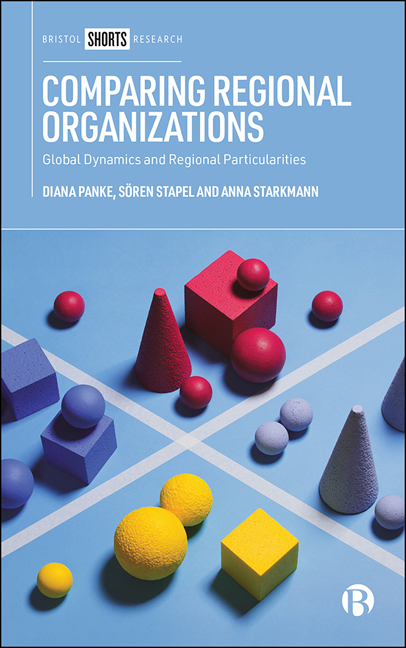Book contents
- Frontmatter
- Contents
- List of Figures and Tables
- Abbreviations
- Preface
- One Introduction
- Two Conceptual Framework and Measurement
- Three The Global Perspective
- Four Regional Organizations in Africa
- Five Regional Organizations in the Americas
- Six Regional Organizations in Asia
- Seven Regional Organizations in Europe
- Eight Conclusion
- Notes
- Appendix
- References
- Index
One - Introduction
Published online by Cambridge University Press: 12 March 2021
- Frontmatter
- Contents
- List of Figures and Tables
- Abbreviations
- Preface
- One Introduction
- Two Conceptual Framework and Measurement
- Three The Global Perspective
- Four Regional Organizations in Africa
- Five Regional Organizations in the Americas
- Six Regional Organizations in Asia
- Seven Regional Organizations in Europe
- Eight Conclusion
- Notes
- Appendix
- References
- Index
Summary
In his seminal work Beyond the Nation-State: Functionalism and International Organization, Ernst Haas argues that regional integration is not a phenomenon confined to the European continent (Haas, 1964). Although the European Union (EU) has become the most researched regional organization (RO), ROs have evolved in all parts of the globe. From a comparative regionalism perspective, the predominance of the EU in the literature is surprising given that it is neither the oldest of its kind nor the largest. ROs date back to 1910 when the predecessors of today's Botswana, Lesotho, Namibia, South Africa and the Kingdom of Eswatini (formerly Swaziland) founded the South African Customs Union (SACU). ROs come in all shapes and sizes. For instance, the Organization for Security and Co-operation in Europe (OSCE) with its 56 member states (as of 2012) is the largest RO. The RO with the broadest scope of policy competencies is the African Union (AU), which reached 203 specific competencies in 2010.
This book provides important and novel insights into the trajectories of RO development. We conceive of ROs as organizations that are based on a set of written legal rules (primary law) as well as headquarters or a secretariat in which at least three states cooperate with one another on the basis of geographic criteria in more than one narrowly defined issue area (Panke et al, 2017; Panke and Stapel, 2018a). Applying these criteria, our study includes 76 ROs (Table A1 in the Appendix).
This book offers a typology of ROs that captures important challenges and opportunities ROs face in their day-to-day operation and provides the most comprehensive comparative analysis of regionalism around the world to date.
The typology builds on two dimensions: RO size and RO policy scope. The former captures the number of member states of an RO in a given year and the latter the number of primary law-based policy competencies that ROs have obtained over time. On this basis, the book identifies four types of ROs, namely: small selective ROs, which are characterized by few member states and a limited policy scope; small encompassing ROs, which have few members but are equipped with a wide range of policy competencies; large selective ROs, which have many member states but few policy competencies; and large encompassing ROs, which have many member states and a wide range of policy competencies.
- Type
- Chapter
- Information
- Comparing Regional OrganizationsGlobal Dynamics and Regional Particularities, pp. 1 - 14Publisher: Bristol University PressPrint publication year: 2020



